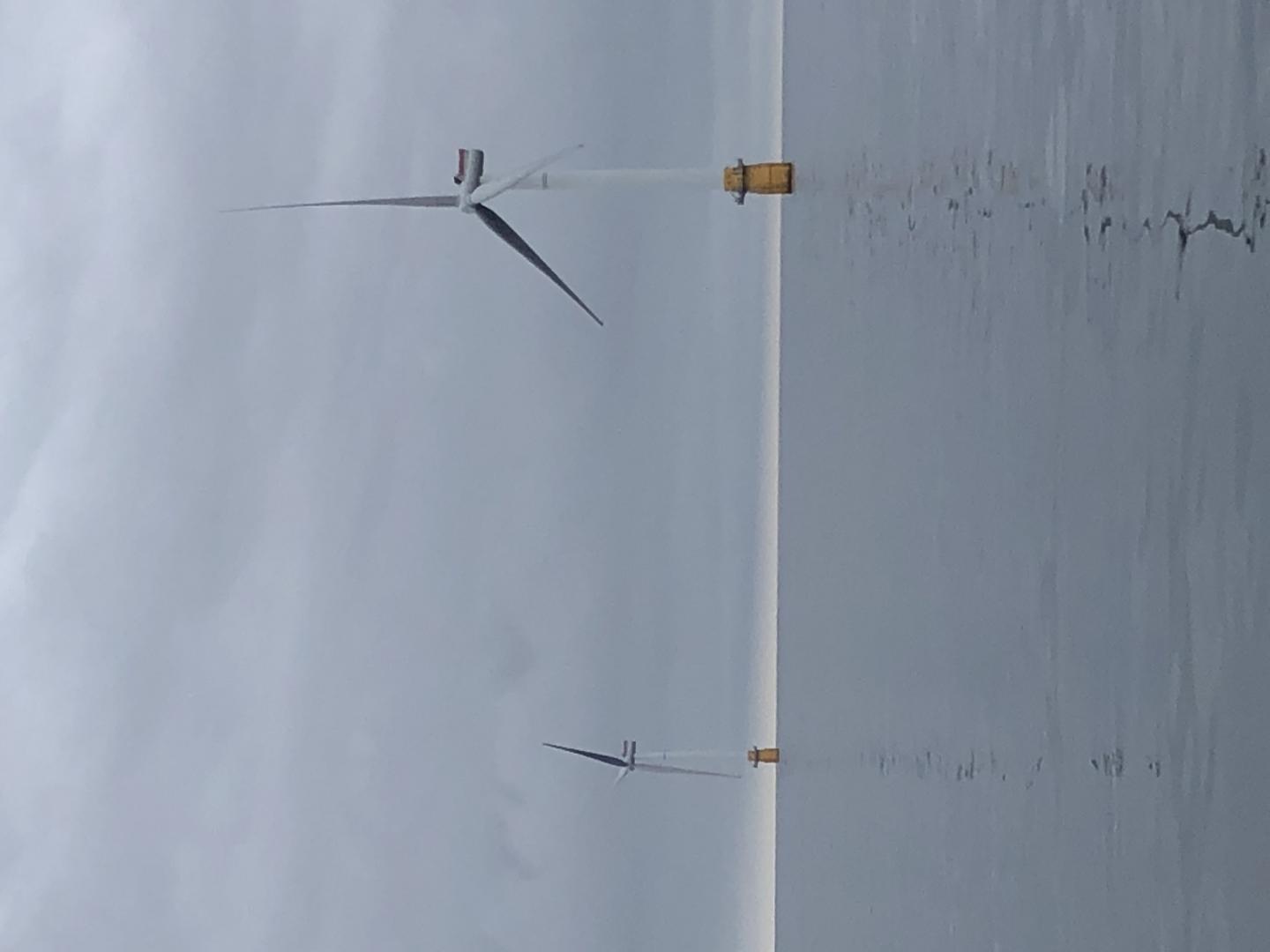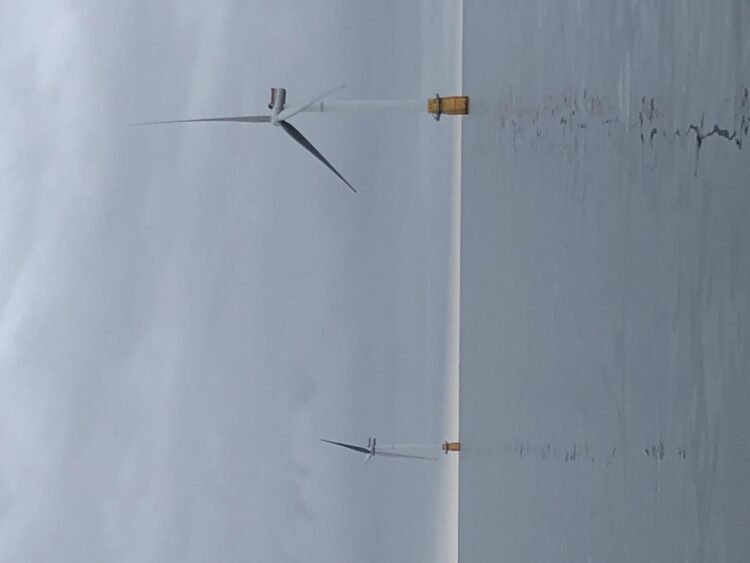Offshore wind peaks in the evening when power demands are greatest and other renewable energy sources are less available

Credit: Yi-Hui Wang and Ben Ruttenberg
As California aims to provide 60% of its energy from renewable sources by 2030 and 100% by 2045, a study from California Polytechnic State University provides some good news. Offshore winds along the Central Coast increase at the same time that people start using more energy — in the evening.
One of the challenges of moving toward fully renewable energy is matching production to demand. Though the state has high existing solar energy capacity and the potential for even more, the supply of solar power peaks in the middle of the day and ends when the sun goes down. Consumer demand, on the other hand, peaks in the evening when people return from work around or after sunset.
Because storage of solar energy on a large scale is not yet practical, other renewable sources are needed to meet the Golden State’s environmental milestone of going fully renewable.
The Cal Poly research team found that offshore winds are strongest when demand is greatest, making it an ideal candidate to fill the gap left by solar and on-shore wind energy production. The team was led by research scientist Yi-Hui Wang and included biology professors Ben Ruttenberg and Crow White and physics Professor Ryan Walter.
“The alignment between potential offshore wind power production and demand highlights the important role that offshore wind energy could play in meeting California’s ambitious renewable energy goals,” Wang said.
Even more promising, offshore winds reach their peak during the hot summer months when state energy use is highest due to the use of air conditioning. Offshore wind energy offers several other advantages over land-based wind and solar energy, including stronger and more consistent winds and less impact on other land uses.
The greatest wind speeds, which would produce the most energy, are found farther from the coast. Most existing offshore wind farms are installed close to shore in shallow water less than 160 feet deep. However, several floating wind farms in deeper water farther from shore are now in operation in Europe, with more in the planning stages.
“Floating offshore wind farms are now a proven technology and game-changer in many respects,” Walter said. “These floating platforms make offshore wind farms a new reality in many locations, with a single turbine having the potential to power more than 10,000 homes.”
The Bureau of Ocean Energy Management, which funded the study, is considering the Central Coast as a location for California’s first offshore wind farm and has proposed priority areas for leasing by energy companies. The Cal Poly study provides crucial information that, along with other studies on economic, cultural and environmental factors, will help guide the evaluation and planning of offshore wind energy.
“Looking at this wind data in relation to maps of fisheries, whale and seabird activity will help identify locations where offshore wind farms could add the most value and yet have the least impact on local economies and marine wildlife,” White said.
The Cal Poly team is working on the next steps, which include estimating the total amount of electricity wind farms in the area could produce and how these wind farms might affect the broader economy of San Luis Obispo County.
“Ultimately, we hope this information and our ongoing work will inform the conversation, helping the policymakers and citizens of California decide if, how and where to prioritize renewable offshore wind energy,” Ruttenberg said.
###
Links:
Original study, Spatial and temporal variation of offshore wind power and its value along the Central California Coast, published in IOPscience: https:/
Media Contact
Ryan Walter
[email protected]
Original Source
https:/
Related Journal Article
http://dx.





